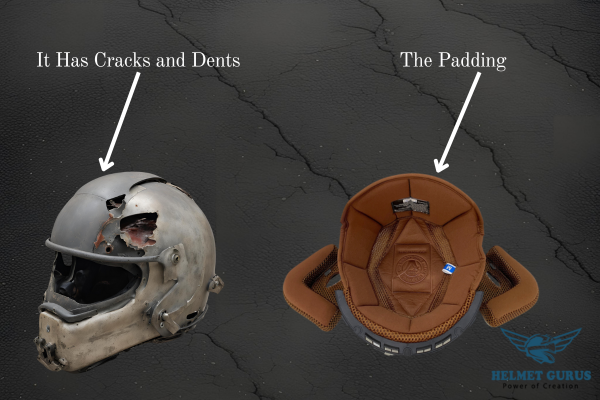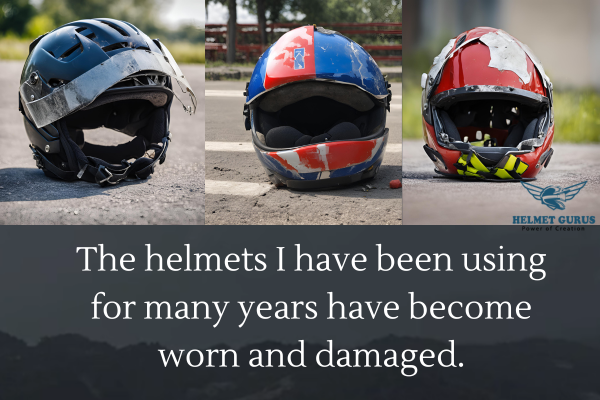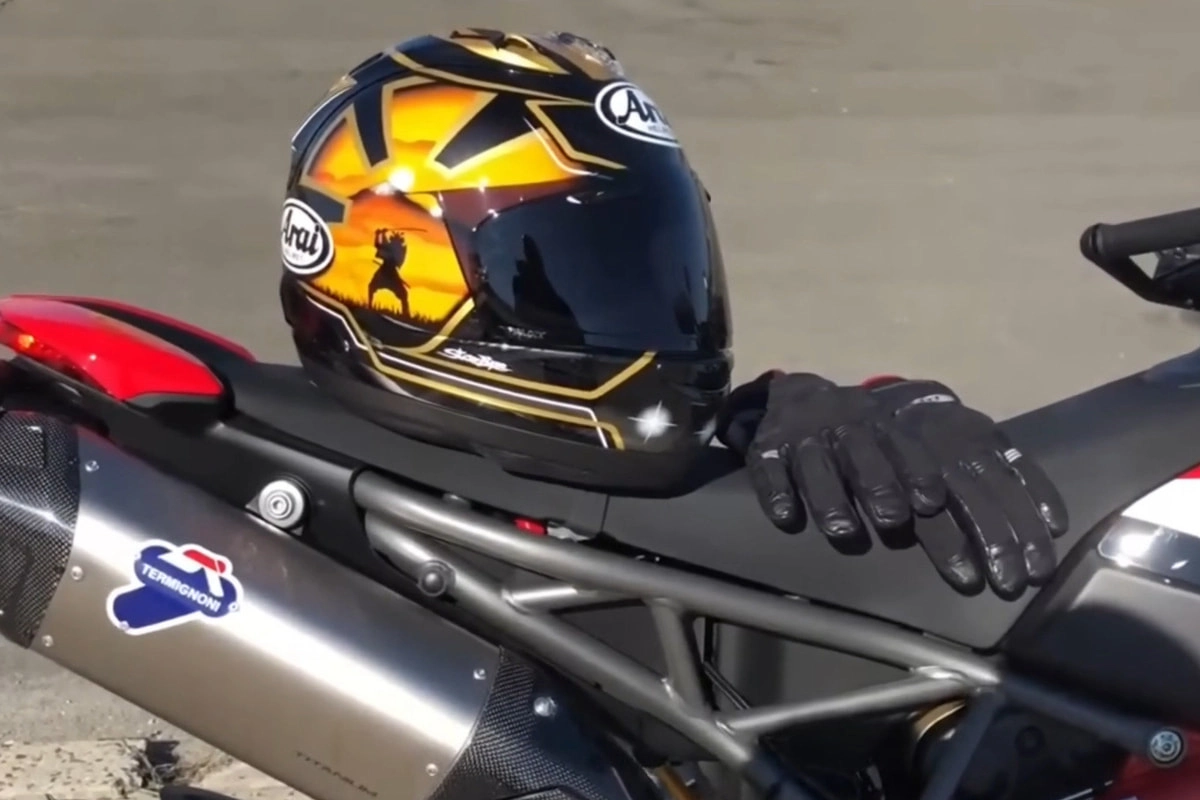How long are motorcycle helmets good for? This is a critical question since a careful rider should never use damaged or worn helmets. The benefits of motorcycle helmets mean you should always ride with a sound one.
You might have relied on one helmet for many years due to ignorance of the average lifespan of a motorcycle helmet. But now you need to examine your helmet, know whether it has expired or requires replacement. It’s all about maximizing your safety. The post is to help you about that.
Do Motorcycle Helmets Have Expiration Dates? Experts Insight
When do helmets expire or do they?
Leading helmet manufacturers recommend you change your helmet every five years. Though many riders view that as a lot, it’s dependent on your riding frequency.
The five-year rule for changing helmets holds for avid daily motorcycle riders. Daily rides degrades your equipment faster. Environmental factors, exposure to harsh chemicals, sunrays, and sweat also hastens the process.
The degradation rate depends on the initial quality and material. Cheap helmets may wear out in less than 5 years. Therefore, if you are an avid daily rider, inspect your helmet’s manufactured date. If it’s more than five years, use it at your peril!
A weekend rider doesn’t necessarily have to stick to the 5-year average lifespan of a motorcycle helmet. But correct helmet storage in a cool and dry setting prolongs its life and performance.
There are other signs of an expiring helmet. Straps that are either falling apart or frayed can’t lock the helmet securely and thus needs replacement. Also, if the inner padding wobbles, fix it or forget about the helmet.
Most likely, moisture or excess heat may have caused the glue to give way. Further, any cracks, fractures, or fade in color are a sign of degrading structural integrity.
If you sustain a helmet crash, it’s wise to replace it. The accident may cause tiny cracks or compact the EPS liner and thus register poor performance next time.
Even an unused helmet in proper storage condition finally degrades in performance. That can happen after 8, 10, 15, 20, or even years; it’s hard to tell the exact time. So, would you bet on a helmet that has been lying around for years with your safety?
Remember, it only takes one accident to crash your head. And you might not get lucky to survive or get a spare head. But you can buy another helmet. Choose wisely.Besides, you may upgrade to a better helmet with Bluetooth technology before a motorcycle helmet lifespan expiry.
When You Should Consider Replacing Your Motorcycle Helmet

If you are wondering how long are helmets good for motorcycle riding, then you probably suspect that your helmet has suffered damage. Here are some telltale signs of a worn or damaged helmet.
It Has Cracks and Dents
Physical signs of damage are the most obvious signs of helmet damage. Therefore, you should consider helmet replacement if it has visible cracks and dents. Other physical damage signs, like damaged straps, also matter.
Its Shell Is Deformed
The helmet shell is its primary protective part. Thus, a deformed shell clearly indicates damage even if it has not cracked.
The Padding Is Loose
The helmet shell is hard and can injure you if it hits your head in an accident. Manufacturers use cushioning materials or padding to cushion your head from impacts during accidents. Loose padding does not provide adequate protection, so it’s a clear sign of helmet damage.
It No Longer Fits You As Before
Lastly, a helmet that doesn’t fit you as well as it previously did require replacement. If you measured your head and helmet and got the right one, then its fit shouldn’t change over time. The fit will only change if the helmet suffers damage.
The elements that influence the durability of a motorcycle helmet

There is no specific period for using a helmet. The answer to how long do helmets last depends on the following factors.
Usage and Handling Habits
How you use your helmet determines the abuse it gets. For example, dropping the helmet or knocking it against other items increases the risk of damage. The knocks might dent, crack, or scratch the helmet.
Storage Conditions
The helmet’s storage location matters for several reasons. The storage location determines the temperatures your helmet will experience, the chemicals that can damage the helmet, and the items that might fall on the helmet.
For example, storing a helmet where harsh chemicals can spill can reduce its lifespan. Similarly, constant exposure to strong sunlight also affects the helmet’s durability.
Accidents
Your helmet protects you from injuries by absorbing the brunt of the impact during an accident. The helmet suffers some damage (even though the damage might be invisible) every time you are in an accident involving blows to the head.
Maintenance
Helmet maintenance involves regular cleaning, inspection, replacement of broken accessories, and adjustments. Manufacturers also have specific instructions for helmet care. How closely you adhere to these maintenance tasks determines the helmet’s longevity.
Material and Quality
A helmet’s build and material determine its quality, and the quality affects durability. For example, fiberglass and carbon fiber helmets are strong and last longer than other materials. Remember, however, even superior-quality helmets require good care to last a long time.
Age
Age-related wear and tear affect all helmets, just as they do other manufactured products. Over time, your helmet will age and require a replacement, even if you take good care of it.
So do ski helmets expire with age also? Even if you use the helmet on special occasions like Ski type, it eventually expires. For that reason it’s wise to consider replacing your ski helmet after about 5 seasons.
Chemical Exposure
Chemical spills on the helmet can cause damage. For example, the protective coating on the visor can deteriorate if you wash it with harsh detergents or expose it to strong chemicals. The damage might not be immediate, but it will accumulate over time.Another trick for being timely in knowing when to replace motorcycle helmet is scrutinizing your gear daily. Check for aging , chemical erosion and wear signs.
Conclusion
Do not use your damaged or worn helmet. Err on the side of caution and replace the helmet if it can no longer protect you. You can always ask a motorcycle professional for guidance on helmet replacement.
Hopefully, you now have an answer to the question of how long are motorcycle helmets good for. Don’t forget that your helmet might wear faster than a friend’s helmet, even if they are of the same brand. Ultimately, how you use your helmet and the accidents it has protected you from matter a lot.
If you want a safe ride, don’t compromise on the quality of the helmet you wear. Therefore, how long has your helmet lasted? And does it require replacement, based on the information you have gathered from the post?


Related Posts
Top 10 Best Modular Helmet: The Practical Balance Between Breathability and Safety Problems
The best modular helmet provides the benefits of both worlds. It’s a versatile helmet that adapts to various settings. While [...]
Best Scorpion Modular Helmets For Safe Adventure Rides
Scorpion has been in the helmet industry for over a century. Therefore, you can count on the safety and comfort [...]
Best Flip-up Helmet : TOP Recommendations From Experts
The best flip-up helmet adds versatility and convenience and hence makes every tour ride enjoyable. However, it doesn’t have to [...]
What Is a Modular Helmet? Everyone Wants to Know!
As a motorcycle rider, you should know what is a modular helmet since it may just be what you need. [...]